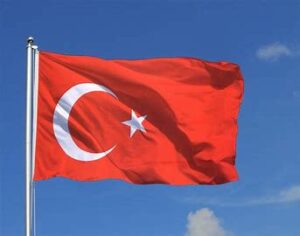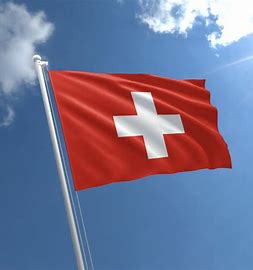
Montenegro Issues a Draft QDMTT Law to apply from January 1, 2026
On November 26, 2025, Montenegro issued a Draft Law to apply a domestic minimum top-up tax (DMTT) from January 1, 2026.
• Covered taxes that are not reflected in the current tax figure in the P&L account, but are expensed elsewhere are added to covered taxes under Article 4.1.2(a) of the OECD Model Rules to ensure they are taken into account.
• Where a Pillar Two GloBE loss deferred tax asset election is made, any amount of this that is used in a fiscal year is added back under Article 4.1.2(b) of the OECD Model Rules. This is required as the unwinding of the deferred tax loss needs to be reflected in the P&L, just as it would be under standard deferred tax accounting. See more information on this election at GloBE loss deferred tax asset election.
Ie even if an election wasn’t made for the loss, the unwinding of the deferred tax asset would be:
Dr P&L Deferred Tax,
Cr Balance sheet – Deferred Tax
This simply replicates this treatment.
• An amount of current tax expense that relates to an uncertain tax position is generally not included in covered taxes. An uncertain tax position is an accounting concept (eg for IFRS purposes this is provided by IFRIC 23 (‘Uncertainty over Income Tax Treatments’)). It generally applies where there is uncertainty about whether a tax authority will accept the tax treatment under the local tax law.
For instance, if an MNE took a view that a capital gain would be taxed at 10% but there is a high probability the tax authority would tax it at 20%, the current tax expense would initially reflect the 10% tax.
However, a further accounting entry would include an addition to the current tax expense to reflect the 20% tax:
Dr Current Tax in the P&L,
Cr Provision in the Balance Sheet
When the uncertainty ceases the provision is then released.
For the purposes of covered taxes, uncertain tax positions are not included. However, if they are subsequently paid, they are added to covered taxes.
• As discussed at in the adjustments to GloBE income, a Qualified Refundable Tax Credit is a refundable tax credit paid as cash or available as a cash equivalent within four years from the date when a constituent entity satisfies the conditions for receiving the credit. This is treated as income for Pillar Two GloBE income purposes.
Therefore, if the amount of Qualified Refundable Tax Credit has been reflected as a reduction to the current tax expense, this needs to be reversed and the amount is added back to covered taxes.
If the amount was included in financial accounting income anyway, no adjustment is required. See our Members article on the Pillar Two treatment of R&D tax credits internationally:
Analysis of R&D Tax Credit Regimes Internationally and Their Treatment Under Pillar Two
• If the underlying income is excluded from the Pillar Two GloBE income calculation, any amount of covered taxes that relate to that excluded income also needs to be removed from the covered tax calculation under Article 4.1.3(a) of the OECD Model Rules.
For more information on income excluded from the Pillar Two GloBE income calculation see Pillar Two GloBE Income Adjustments.
This is required as otherwise the adjusted covered taxes of a constituent entity could be significantly inflated and the ETR would be significantly raised, reducing any potential top-up tax liability.
Example
MNECo1 is a member of an MNE group subject to the Pillar Two GloBE Rules. Its financial accounting profit is 10,000,000 euros.
The domestic tax rate is 10% and for the sake of simplicity, we assume financial income equals taxable income. The corporate income tax charge reflected in the accounts would be 1,000,000 euros.
For Pillar Two GloBE Income purposes, the financial accounting profit includes an excluded dividend from a related MNE group entity of 5,000,000 euros.
This is therefore excluded from Pillar Two GloBE income. As the tax reflected in the financial accounts is 1,000,000 euros this would equate to a Pillar Two ETR of 20% (1,000,000/5,000,000). Which would take MNECo1 outside the scope of any top-up tax liability.
Therefore, the tax attributable to the excluded dividend is also excluded from the adjusted covered tax calculation:
(5,000,000/10,000,000)* 1,000,000 = 500,000 euros.
Adjusted covered tax is reduced from 1,000,000 euros to 500,000 euros which would then reduce the Pillar Two GloBE ETR to 10%.
• Whilst Qualified Refundable Tax Credits are treated as Pillar Two GloBE income, Non-Qualified Refundable Tax Credits are not.
Ie they are treated as a reduction to the current tax expense in the financial accounts.
If the accounting treatment follows this, then no adjustment is required.
However, if for accounting purposes the tax credit is reflected as income in the P&L account this would need to be reversed and the amount of tax credit would be removed from the current tax expense, as provided in Article 4.1.3(c) of the OECD Model Rules.
• Similarly, any other covered taxes refunded or credited to the constituent entity are treated as a reduction in covered taxes if they aren’t reflected as a reduction to the current tax expense in the financial accounts.
In other words, if for accounting the accounting credit has gone somewhere else in the P&L (eg income or a reduction in other expenses), then an adjustment is made for Pillar Two purposes to reduce adjusted covered taxes.
• As discussed above, an amount of a current tax expense that relates to an uncertain tax position is deducted from covered taxes under Article 4.1.3(d) of the OECD Model Rules.
• Any amount of the current tax expense that is not expected to be paid within three years of the end of the fiscal year must also be deducted from covered taxes under Article 4.1.3(e) of the OECD Model Rules.
Adjusted covered taxes are the financial accounting profits of the entity as adjusted for Pillar Two purposes. The Pillar Two rules require a number of adjustments to try and result in a standardised measure of tax for all IF members. This is then used along with GloBE income to calculate the GloBE ETR.
There are a number of adjustments which include removing tax related to income excluded from the Pillar Two Rules, adjusting for refundable tax credits and adjusting for deferred tax.

On November 26, 2025, Montenegro issued a Draft Law to apply a domestic minimum top-up tax (DMTT) from January 1, 2026.

On December 1, 2025, Turkey announced an extension in the filing and payment date for the QDMTT return and the opening of a test environment for the submission of the QDMTT return.

On November 26, 2025, the Swiss Federal Council issued an amendment to the Minimum Tax Ordinance to provide for the OECD GIR provisions, as well as some other small amendments.

On November 19, 2025, Hungary enacted Pillar 2 amendments from the 2025 Autumn Tax Package. This includes some amendments to the operation of the Transitional CbCR Safe Harbour.

On November 18, 2025, Slovakia issued its QDMTT Return

On November 14, 2025, Hungary issued a Draft Regulation (for consultation) to provide for the detailed application of the Pillar 2 Safe Harbours.

Italy has issued 2 regulations relating to the Administration of the Pillar 2 top-up tax. A November 7, 2025 Decree provides for more information on the rules for the submission of the GloBE tax return. Resolution no. 63 of November 10, 2025 provides for the tax codes to be used for the payment of top-up tax on the F24 payment form.

On November 3, 2025, Finland issued a draft law for consultation to amend its Minimum Tax Act for the June 2024 and January 2025 OECD Administrative Guidance.

A Communique of October 29, 2025 issued by the MRA provides further information on QDMTT Notifications.
| Cookie | Duration | Description |
|---|---|---|
| cookielawinfo-checkbox-analytics | 11 months | This cookie is set by GDPR Cookie Consent plugin. The cookie is used to store the user consent for the cookies in the category "Analytics". |
| cookielawinfo-checkbox-functional | 11 months | The cookie is set by GDPR cookie consent to record the user consent for the cookies in the category "Functional". |
| cookielawinfo-checkbox-necessary | 11 months | This cookie is set by GDPR Cookie Consent plugin. The cookies is used to store the user consent for the cookies in the category "Necessary". |
| cookielawinfo-checkbox-others | 11 months | This cookie is set by GDPR Cookie Consent plugin. The cookie is used to store the user consent for the cookies in the category "Other. |
| cookielawinfo-checkbox-performance | 11 months | This cookie is set by GDPR Cookie Consent plugin. The cookie is used to store the user consent for the cookies in the category "Performance". |
| viewed_cookie_policy | 11 months | The cookie is set by the GDPR Cookie Consent plugin and is used to store whether or not user has consented to the use of cookies. It does not store any personal data. |